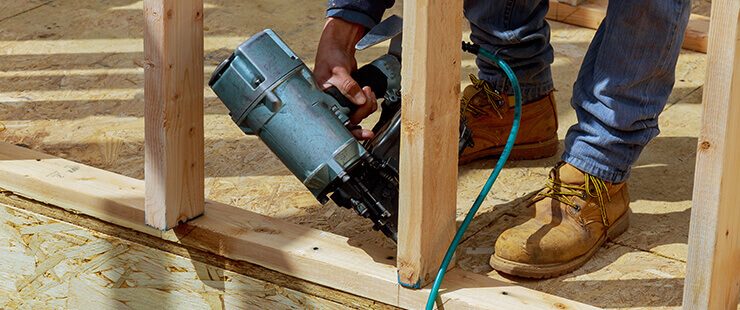Get unique, complex parts easily. No matter your requirements, Chaoyi Spring creates hard-to-produce coil springs and wire forms.
Let us help you create the custom wire form you need, from S-hooks and J-hooks to utility hooks and more.
We work closely with customers across a wide range of industries, helping them design and manufacture made-to-order parts.
Why choose Chaoyi Spring? We prioritize customer-focused collaboration, modern equipment and the latest technology to make your parts per print.
Find the information and guidance you need, from measuring a spring to learning about materials, placing an order and much more.
Low torsion springs, often overlooked in the grand scheme of things, are the unsung heroes of our daily lives. From the smooth opening of a door to the satisfying click


Low torsion springs, often overlooked in the grand scheme of things, are the unsung heroes of our daily lives. From the smooth opening of a door to the satisfying click of a pen, these humble devices quietly contribute to the functionality and convenience we take for granted. This article delves into the world of low torsion springs, exploring their unique characteristics, diverse applications, and the fascinating science behind their operation.

Torsion springs, unlike their compression and extension counterparts, work by twisting rather than stretching or compressing. Their design, usually a coiled wire, allows them to store energy when twisted and release it to generate a rotational force. The key parameter for a torsion spring is its 'spring rate,' which defines the torque generated for each degree of twist. Low torsion springs, as their name suggests, have a relatively low spring rate, meaning they require less force to twist them.
This lower spring rate brings about a host of unique advantages in various applications. They offer a gentler, more controlled motion, allowing for smoother operation and reduced wear and tear on the mechanisms they power. Moreover, their ability to handle large angular displacements makes them ideal for applications where flexibility and precise control are crucial.
Low torsion springs are found in a surprisingly wide array of everyday objects, demonstrating their remarkable versatility. They are often used in:
• **Doors and Windows:** Low torsion springs in door closers and window hinges ensure a smooth and controlled closing motion, adding to the overall safety and ease of use. The gentle nature of the spring prevents slamming and minimizes noise, creating a more pleasant experience.
• **Writing Instruments:** The satisfying click of a pen, so familiar to us all, is powered by a tiny low torsion spring. These springs allow for a precise and reliable mechanism that ensures the pen retracts smoothly, enhancing the writing experience. The small size and low force output of these springs make them ideal for such delicate applications.
• **Electronic Devices:** The tiny motors in many electronic devices, such as smartwatches and mobile phones, often rely on low torsion springs for precise positioning and smooth operation. The ability of these springs to handle delicate movements with minimal force makes them essential components in these compact and intricate devices.
• **Medical Devices:** Low torsion springs are used in medical devices like surgical instruments, where precise and controlled movements are paramount. Their gentle nature and ability to handle small movements allow for delicate procedures, ensuring the safety and comfort of patients.
While low torsion springs are widely used in everyday objects, they also find application in specialized industries like:
• **Automotive Industry:** Low torsion springs are used in suspension systems, steering columns, and other components, offering a smooth and controlled response, enhancing ride comfort and handling. Their ability to handle large angular displacements makes them ideal for these critical applications.
• **Aerospace Engineering:** These springs play a critical role in aircraft control surfaces, where precise and reliable actuation is crucial for safe and stable flight. Their lightweight nature and ability to withstand extreme temperatures make them ideal for these demanding applications.
• **Manufacturing and Robotics:** Low torsion springs are used in robots and automated machines to provide precise and controlled movements, increasing efficiency and reducing downtime. Their ability to handle repetitive movements with minimal wear and tear makes them invaluable components in these industrial settings.
As technology continues to advance, the demand for low torsion springs is only expected to grow. Their versatility, coupled with their inherent ability to handle delicate and precise movements, makes them essential components in a vast array of applications, from everyday objects to cutting-edge technologies. With the rise of miniaturization and the growing demand for smoother, quieter, and more reliable mechanisms, low torsion springs are poised to play an even more significant role in the future.
Low torsion springs, despite their seemingly mundane nature, are truly remarkable devices. They are the unsung heroes of our daily lives, contributing to the functionality and convenience we often take for granted. From the smooth operation of a door to the delicate movements within a smartwatch, low torsion springs are essential components in a vast array of applications, making our world a little smoother and a lot more efficient.
Next time you enjoy the satisfying click of a pen or appreciate the smooth operation of a door, remember the hidden force behind these actions – the humble yet powerful low torsion spring. It's a testament to the fact that even the smallest, most overlooked components can have a profound impact on our daily lives.
Browse some of the custom wire forms and springs that we manufacture. Don’t see what you need? We specialize in made-to-order products that meet your application requirements.
Visit Our GalleryNeed a custom wire form or coil spring? We make it work. Fill out the contact form and a representative will respond within 1 business day. If you have a PDF or CAD file, you can submit to request a quote.